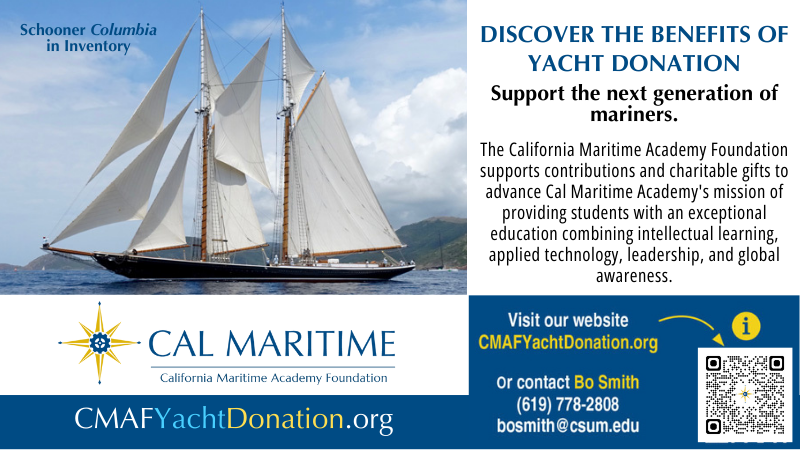
Lipton Cup Host Richmond Yacht Club Wins Regatta
The Lipton Cup has been raced on S.F. Bay for over 100 years, with the Pacific Inter-Club Yacht Association (PICYA) having shepherded it for many decades. It started with big boats and moved to somewhat smaller boats — an under-30-ft class; a 30–40-ft class; and an over-40-ft class; and later, one-design. Throughout its first century, the rating rules evolved from CCA to IOR to PHRF. In 2017, a group of clubs got together to propose a revitalization of the event. This resulted in the one-design racers using the St. Francis Yacht Club’s matched fleet of J/22s.
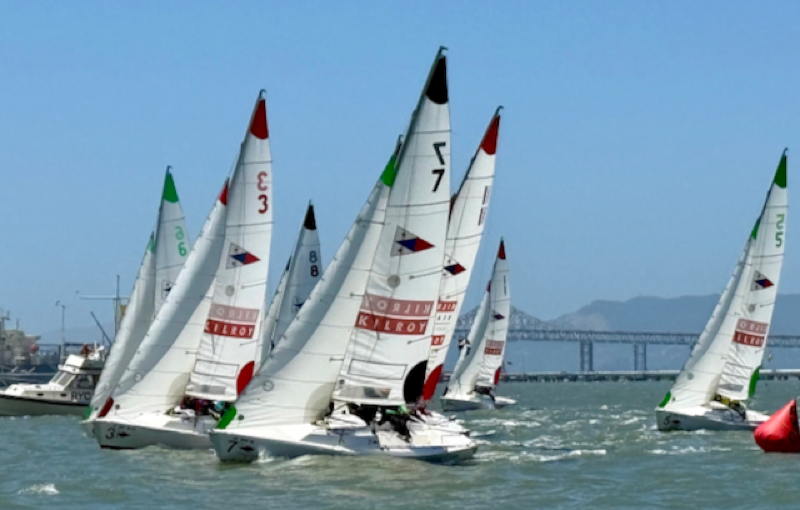
Since inception of the J/22 era of Lipton Cup races, the following are the host and winning clubs:
Year Host Winning Club
2018 RYC (Richmond) InvYC (Inverness)
2019 RYC RYC
2020 Not held due to the pandemic
2021 SBYC/EYC (South Beach/Encinal) SFYC (San Francisco)
2022 CYC (Corinthian) RYC
2023 SFYC StFYC
2024 EYC SFYC
2025 RYC RYC
From 2018 to 2024 the race included a destination race on Friday from the StFYC to the host club’s venue, and a return destination race to StFYC Sunday afternoon. The distance races were rough on the boats and crew. (See this story from the 2019 Lipton Cup for an example.)
To avoid the higher winds and rough waters of the Central Bay (and damage to boats and crew!), this year’s event took place out of RYC for all three days. It was a wise choice, as, no surprise, the winds and waves in the Slot were high. PRO Tim Knowles selected the Keller Cove venue off Richmond; the boats held together and the crews were happy.
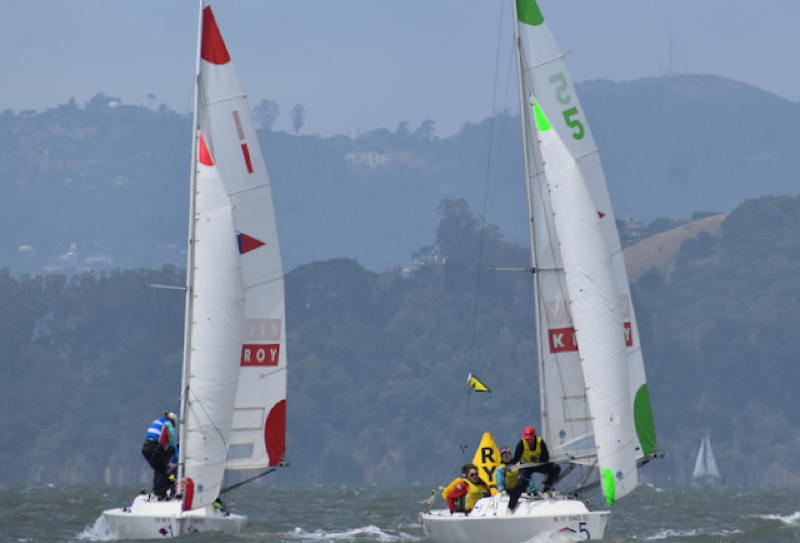
Ten clubs entered this year’s regatta: Berkeley, Corinthian, Encinal, Inverness, Richmond, San Francisco, Sequoia, South Beach, St. Francis, and Tahoe.
Friday had three races, with women over 25 skippering the boats for two course races and one distance race. Winners for Friday’s races were vying for the Admiral’s Cup, and for second place, the Valhalla Cup.
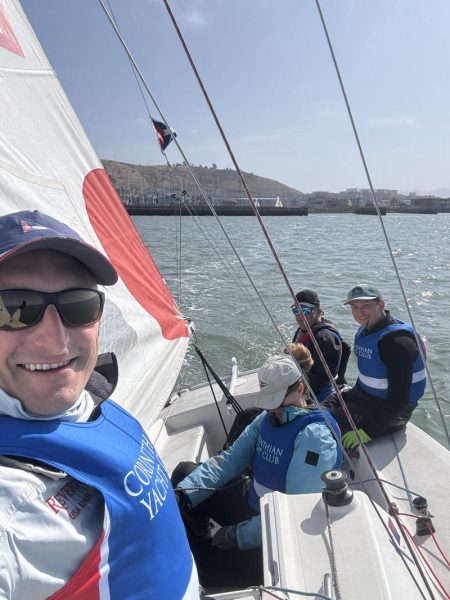
Saturday included seven stamina-testing course races for skippers over 25, with this day’s results counting double. Saturday’s racing was conducted under Umpired Fleet Racing rules, with four local umpires making the on-the-water calls. First place won the Sir Thomas Lipton Challenge Trophy, while second was awarded the Edward E. Peck Cup. Third place got free visits to the chiropractor.
Sunday had two course races and one distance race scheduled for skippers over 60. One course race was completed, and one distance race, but the second course race was canceled due to lack of wind. This day’s racing was for the Larry Knight Trophy (first place), and second place for the Treasurers Cup.
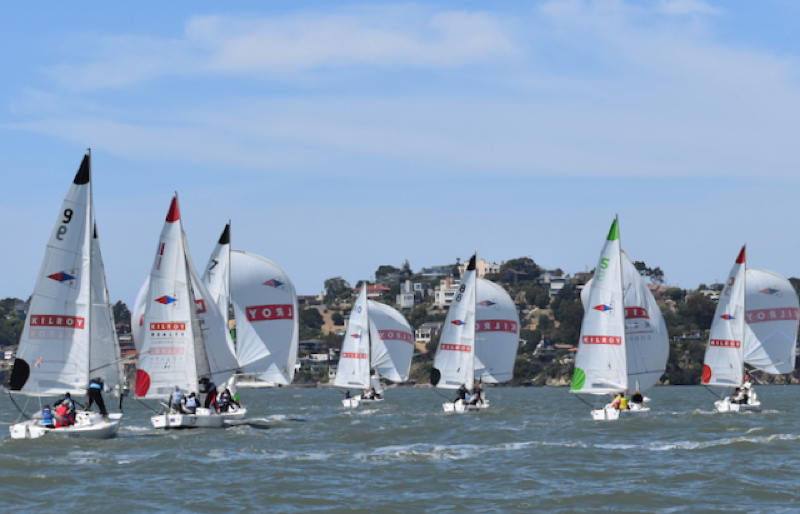
The overall winner received the Sir Thomas Lipton Perpetual Trophy and bragging rights for the Bay. The awards will be presented at the PICYA annual trophy presentation at Point San Pablo Yacht Club on July 7.
The host, Richmond Yacht Club, set aside courtesy by winning all three days of the event, with the StFYC right behind them with three second-place finishes. RYC won Sunday’s racing in a tiebreaker. The winning RYC skippers for Friday, Saturday and Sunday were Melinda Erkelens, Lucy Wilmot and Buzz Blackett.
PRO Tim Knowles oversaw a group of 22 race committee volunteers each day. More RYC volunteers were on land, primarily for the Saturday evening festivities.
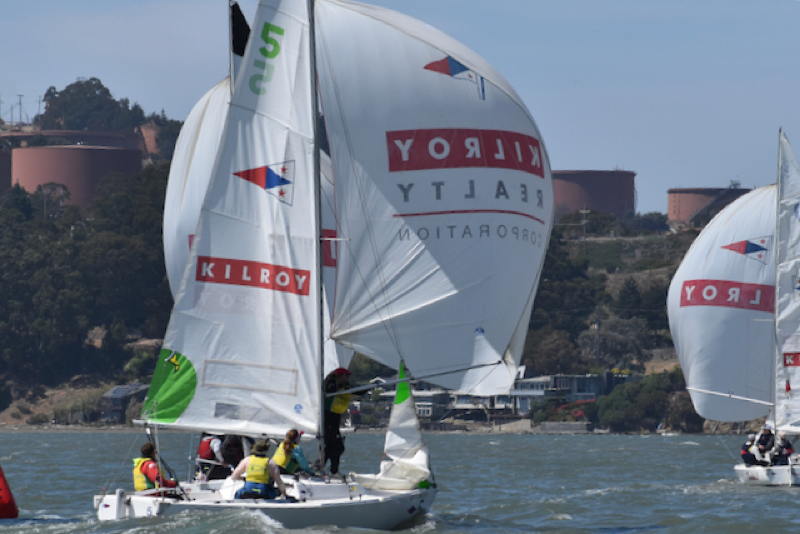
Volunteers from the clubs and from the host club participated in the group tows of the fleet to RYC on Thursday morning, and back to StFYC on Monday morning.
The PICYA and 10 clubs again thank StFYC for providing their matched J/22 fleet for this event and including a “bosun” to take care of the fleet on the water. It’ll be another year before clubs again get a shot at earning the Lipton Cup and bragging rights for the Bay.
The USCG ‘Eagle’ Has Landed — Almost
The USCG tall ship Eagle is scheduled to arrive in San Francisco Bay on the morning of Wednesday, June 25. She will be coming under the Gate at around 8 a.m. and tying up around 10 a.m. at Piers 15/17 by the Exploratorium. The Eagle is heading south after visiting Portland and Astoria, OR. After her Bay Area stop she’ll continue her training mission by visiting our friendly neighbors to the north in Victoria, BC, before again turning south to make a stop in Seattle.
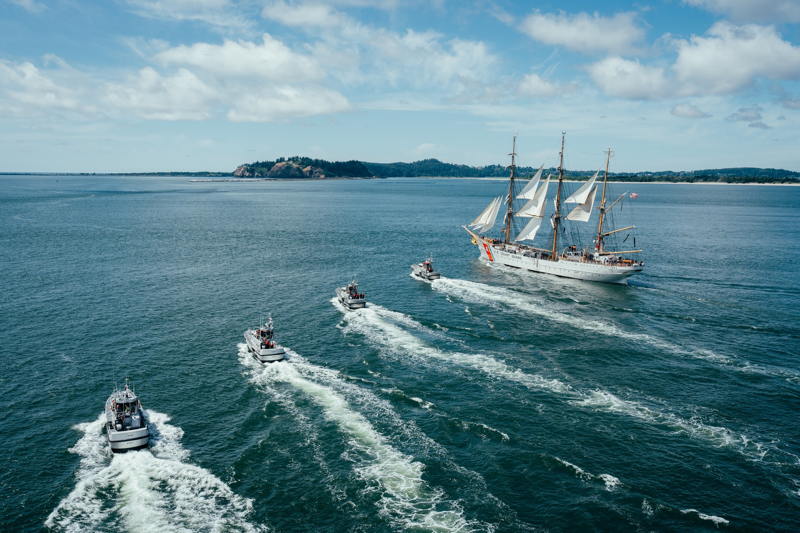
The Eagle will be open for free public tours from 10 a.m. until 7 p.m. on Saturday, June 28, and will depart the Bay on Sunday, June 29. After visiting Victoria, BC, and Seattle, the ship is due to return to the Bay on July 25. There will be more public tours on her second visit, with the schedule TBD. Eagle will leave the Bay again on July 28 and head south to arrive in Los Angeles on August 1.
The remaining West Coast tour schedule is here:
San Francisco – Wednesday, 25 June
Victoria, BC, Canada – Monday, 7 July
Seattle, Washington – Tuesday, 15 July
San Francisco – Friday, 25 July
Los Angeles – Friday, 1 August
San Diego – Friday, 8 August
San Diego – Friday, 15 August
The Eagle is a 295-ft, three-masted barque, and is the only active square-rigger in US government service. She is used as a United States Coast Guard officer-training vessel, with her crew of 120 cadets swapping out at various ports during the tour. She last visited the West Coast and San Francisco Bay in 2008.
You can track the Eagle’s approach to the Bay here.
If you’re wondering what she’s been up to while not sailing the West Coast, or you’re thinking being a Coast Guard officer might be a pretty good gig, check out this video from one of her Caribbean tours:
Discover the Benefits of Yacht Donation with Cal Maritime Academy Foundation
Happy Summer Sailstice
Today is the summer solstice and the longest day of the year. It’s the perfect weekend to kick off the summer of sailing. You can help sailing grow by showing the world why and how we sail by adding your weekend sailing plans to the Summer Sailstice map.
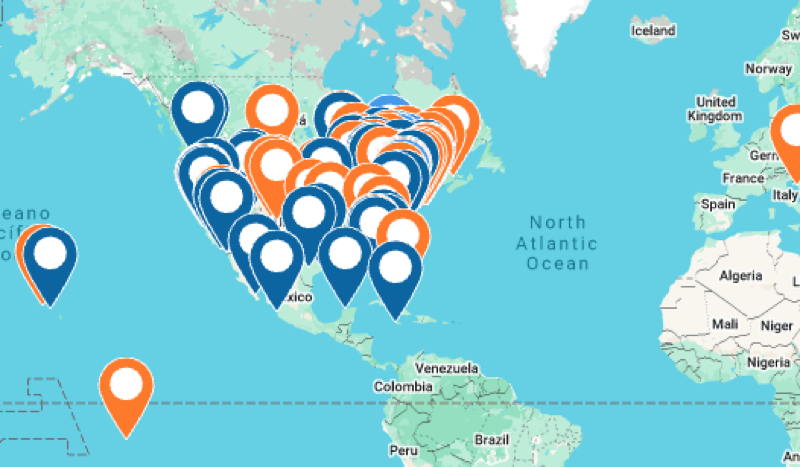
Much of the nation will be sweltering hot, but the coolest place to be anytime is out sailing on the water. If you’re up early it’s an ideal time to ride the flood up to the Delta. And a great time for Opti sailors to be racing the BAYS Summer #1 Regatta at RYC. Mike Daniels is rallying Banderas Bay sailors again for the Marina Riviera Nayarit Umbrella Downwinder. Or you can visit Svendsen’s Bay Marine’s Grand Opening in Richmond.
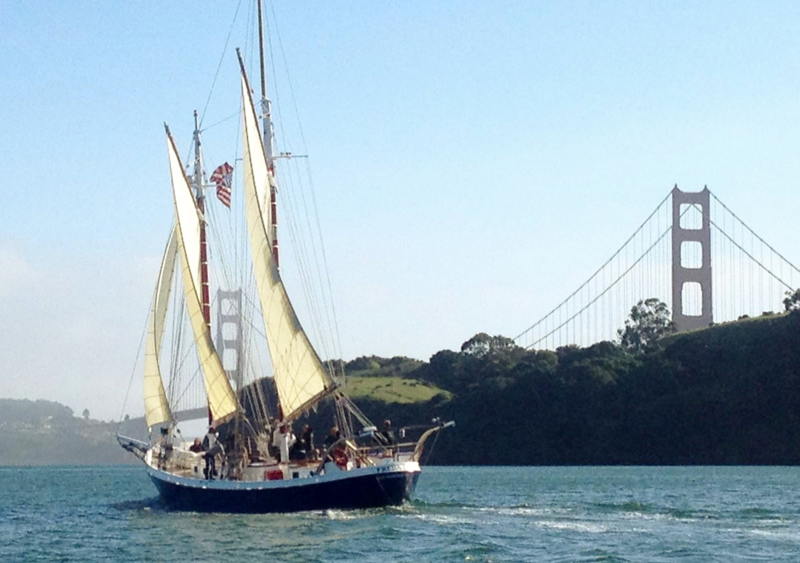
Best wishes for a fantastic summer of sailing. #raiseyoursails
Max Ebb — Tides and Details
No question about it, young techies are the best navigators. They know how to extract the latest weather info from the Web, and they can make Expedition dance.
But when my favorite geeky grad student, Lee Helm, is not available, I might have to cast one of my contemporaries as tactician.
“Tide book is loaded!” he announced as he stepped aboard and handed me the little tide book. “Check out the ebb we have today.”

We had been sailing together since we were both in child-size PFDs and El Toros, and we learned to race in those ancient times, back when the best tidal current data could be found in that little book that most marina offices sell for about a dollar. We had both developed similar protocols for preparing the book for a race. Each page of current diagrams was marked up as follows:
1) Cross out the pages for the Carquinez Strait (unless this is for a Vallejo race.)
2) On the tidal-current table page for the date of interest, underline the row of data for the day.
3) On the current-diagram pages for max flood and max ebb, write the times of max flood or ebb in the inset for Treasure Island.
4) Look up the strength of max flood and max ebb, then consult the table that gives the ratio of the predicted current speed to the speed of the spring tides shown in the diagram. Write this velocity-correction factor in the remaining space in the Treasure Island inset, below the time of maximum current.
5) Write the applicable times on the tidal current diagram pages for one and two hours before max flood or ebb, and one, two, and three hours after max flood or ebb. Now every page has a time stamp and a speed correction factor.
6) Add the predicted time of the next slack current, taken from the current tables, to the bottom margin of each page. Add the predicted time of the previous slack current to the top margin of each page.
“Good work,” I acknowledged my friend’s effort. But he was about to be upstaged by the next crew to arrive: an undergrad engineering student, recommended very highly by Lee Helm.
“He’s just starting to learn to sail,” she had told me. “But I think he has, like, the right mindset for navigation and tactics, once he learns the strings.”
Not surprisingly, considering Lee Helm’s assessment, he did not bring a marked-up tide book. He carried a loose-leaf binder with the Sailing Instructions and Course Sheets in plastic sheet protectors.

